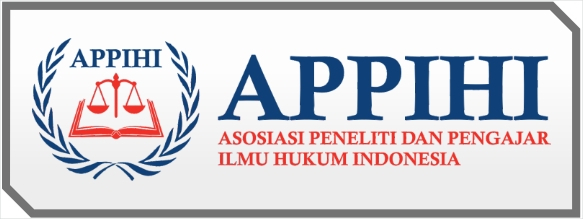Kajian Akselerasi Pengembangan Sektor Pertanian Dalam Mendukung Perekonomian Kabupaten Semarang
DOI:
https://doi.org/10.55606/sinov.v5i1.600Keywords:
Agriculture, Intensification, Modernization, Regional Liability, CollaborationAbstract
The agricultural sector in Semarang Regency has high potential for development, especially the agricultural sector in rural areas. This research is intended to provide an overview of acceleration in developing agriculture to improve the economy. The research method used is descriptive analytic research with a qualitative approach. The data studied is secondary data obtained from BPS data and primary data obtained from interviews with Barenlitbangda Semarang Regency. The research results show that agricultural development needs to be seen from four aspects, namely intensification, modernization, regional livability and collaboration between sectors. Agricultural intensification and modernization in Semarang Regency has been carried out by providing training for coffee farmers. Semarang Regency has also collaborated with the Coffee and Cocoa Research Center from 2021 to 2023. However, there is a need to optimize agricultural development by diversifying crops and types of business, improving technology and the quality of human resources and improving the quality of village roads to support the mobility of goods.
Downloads
References
Arsyad, L. (2015) ‘Ekonomi Pembangunan dan Pembangunan Ekonomi’, Ekonomi Pembangunan Berkelanjutan, 05(01), pp. 1–37.
Bilan, Y. et al. (2017) ‘Social component in sustainable management of land resources’, Journal of Security and Sustainability Issues, 7(2), pp. 107–120. Available at: https://doi.org/10.9770/jssi.2017.7.2(9).
BPS Kabupaten Semarang (2023) Kabupaten Semarang dalam Angka 2023. 2023rd edn. Semarang Regency: BPS Kabupaten Semarang.
Cumming, G.S. et al. (2014) ‘Implications of agricultural transitions and urbanization for ecosystem services’, Nature, 515(7525), pp. 50–57. Available at: https://doi.org/10.1038/nature13945.
Dalrymple, D.G., Southworth, H.M. and Johnston, B.F. (1970) Agricultural Development and Economic Growth, Technology and Culture. Available at: https://doi.org/10.2307/3102823.
Devaux, A. et al. (2018) ‘Agricultural innovation and inclusive value-chain development: a review’, Journal of Agribusiness in Developing and Emerging Economies, 8(1), pp. 99–123. Available at: https://doi.org/10.1108/JADEE-06-2017-0065.
Garibaldi, L.A. et al. (2017) ‘Farming Approaches for Greater Biodiversity, Livelihoods, and Food Security’, Trends in Ecology and Evolution, 32(1), pp. 68–80. Available at: https://doi.org/10.1016/j.tree.2016.10.001.
Glasson, J. and Marshall, T. (2007) Regional Planning. First, Routledge. First. Edited by J. Glasson. London, New York: Routledge.
Govers, G. et al. (2017) ‘Soil conservation in the 21st century: Why we need smart agricultural intensification’, Soil, 3(1), pp. 45–59. Available at: https://doi.org/10.5194/soil-3-45-2017.
Kenter, J.O. et al. (2017) ‘Circular Economy: The Concept and its Limitations’, Ecological Economics, 43(December 2019), pp. 1–13. Available at: https://doi.org/10.1016/j.ecoser.2020.101096.
Klerkx, L. and Rose, D. (2020) ‘Dealing with the game-changing technologies of Agriculture 4.0: How do we manage diversity and responsibility in food system transition pathways?’, Global Food Security, 24(December 2019), p. 100347. Available at: https://doi.org/10.1016/j.gfs.2019.100347.
Li, X. et al. (2022) ‘Building a New Framework for Evaluating the Livability of Living Space on the Basis of the Daily Activities of Rural Residents: A Case Study of Jianghan Plain’, International Journal of Environmental Research and Public Health, 19(17). Available at: https://doi.org/10.3390/ijerph191710615.
Marshall, A. et al. (2020) ‘Australian farmers left behind in the digital economy – insights from the Australian Digital Inclusion Index’, Journal of Rural Studies, 80, pp. 195–210. Available at: https://doi.org/doi.org/10.1016/j.jrurstud.2020.09.001.
Mokgomo, M.N., Chagwiza, C. and Tshilowa, P.F. (2022) ‘The Impact of Government Agricultural Development Support on Agricultural Income, Production and Food Security of Beneficiary Small-Scale Farmers in South Africa’, Agriculture (Switzerland), 12(11). Available at: https://doi.org/10.3390/agriculture12111760.
Pranadji, T. and Simatupang, P. (1999) ‘Konsep Modernisasi dan Implikasinya terhadap Penelitian dan Pengembangan Pertanian’, Forum penelitian Agro Ekonomi, 17(1), pp. 1–13. Available at: https://doi.org/10.21082/fae.v17n1.1999.1-13.
Radić, V., Radić, N. and Cogoljević, V. (2022) ‘New technologies as a driver of change in the agricultural sector’, Ekonomika poljoprivrede, 69(1), pp. 147–162. Available at: https://doi.org/10.5937/ekopolj2201147r.
Saarinen, J. and Lenao, M. (2014) ‘Integrating tourism to rural development and planning in the developing world’, Development Southern Africa, 31(3), pp. 363–372. Available at: https://doi.org/10.1080/0376835X.2014.888334.
Sayoga, A.A.H.E. (2020) ‘Strategi Peningkatan Daya Saing Ekonomi Kecamatan Jambu melalui Pengembangan Potensi Agribisnis’, Jurnal Sinov Barenlitbangda Kabupaten Semarang, 3, pp. 100–115.
Sayoga, A.A.H.E. (2022) ‘Cashew Agribussiness Value Chain Study in Wonogiri Regency’, EKO-REGIONAL: Jurnal Pembangunan Ekonomi Wilayah, pp. 73–82. Available at: https://doi.org/10.32424/1.erjpe.2022.17.2.2983.
Schindler, J., Graef, F. and König, H.J. (2015) ‘Methods to assess farming sustainability in developing countries. A review’, Agronomy for Sustainable Development, 35(3), pp. 1043–1057. Available at: https://doi.org/10.1007/s13593-015-0305-2.
Sugiyono (2011) Metode Penelitian Kuantitatif Kualitatif dan R&D.
Suri, T. and Udry, C. (2022) ‘Agricultural Technology in Africa’, Journal of Economic Perspectives, 36(1), pp. 33–56. Available at: https://doi.org/10.1257/JEP.36.1.33.
Timmer, C.P. (1988) ‘The Agricultural Trasnsformation’, in H. Chenery and T.N. Srinivasan (eds) Handbook of Development Economics. Elsevier Science Publishers B.V, p. 57. Available at: https://doi.org/10.1097/00010694-193602000-00020.
Vicol, M., Pritchard, B. and Htay, Y.Y. (2018) ‘Rethinking the role of agriculture as a driver of social and economic transformation in Southeast Asia’s upland regions: The view from Chin State, Myanmar’, Land Use Policy, 72(September 2017), pp. 451–460. Available at: https://doi.org/10.1016/j.landusepol.2018.01.009.
Vos, R. and Cattaneo, A. (2020) ‘Smallholders and Rural People: Making Food System Value Chains Inclusive’, 2020 Global food policy report: Building inclusive food systems, pp. 14–27.
Wani, S.P. et al. (2012) ‘Enhancing agricultural productivity and rural incomes through sustainable use of natural resources in the Semi Arid Tropics’, Journal of the Science of Food and Agriculture, 92(5), pp. 1054–1063. Available at: https://doi.org/10.1002/jsfa.4721.
Yaqoob, N. et al. (2022) ‘The effects of Agriculture Productivity, Land Intensification, on Sustainable Economic Growth: A panel analysis from Bangladesh, India, and Pakistan Economies’, Environmental Science and Pollution Research [Preprint], (February). Available at: https://doi.org/10.1007/s11356-021-18471-6.
Yurui, L. et al. (2020) ‘Towards the evaluation of rural livability in China: Theoretical framework and empirical case study’, Habitat International, 105(November 2019). Available at: https://doi.org/10.1016/j.habitatint.2020.102241.
Zaehringer, J.G. et al. (2018) ‘Large-scale agricultural investments trigger direct and indirect land use change: New evidence from the Nacala corridor, Mozambique’, Journal of Land Use Science, 13(3), pp. 325–343. Available at: https://doi.org/10.1080/1747423X.2018.1519605.
Zambon, I. et al. (2019) ‘Revolution 4.0: Industry vs. agriculture in a future development for SMEs’, Processes, 7(1). Available at: https://doi.org/10.3390/pr7010036.
Downloads
Published
How to Cite
Issue
Section
License
Copyright (c) 2023 Media Informasi Penelitian Kabupaten Semarang

This work is licensed under a Creative Commons Attribution-NoDerivatives 4.0 International License.



















